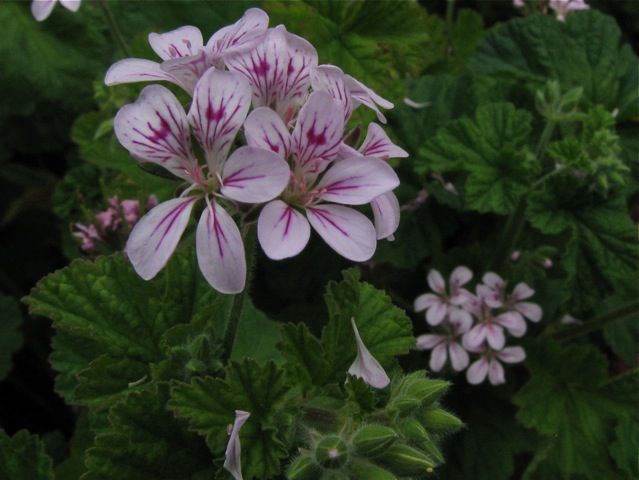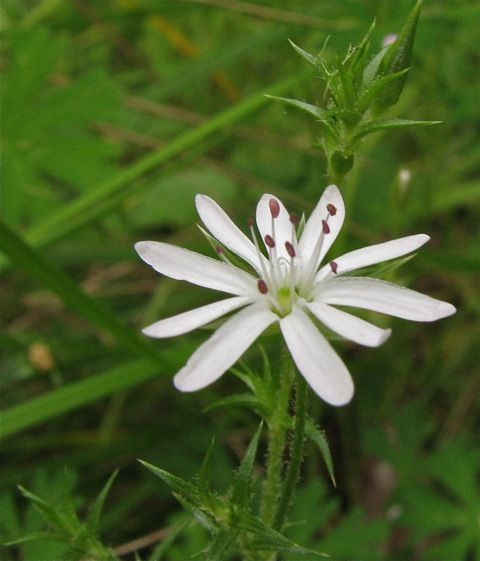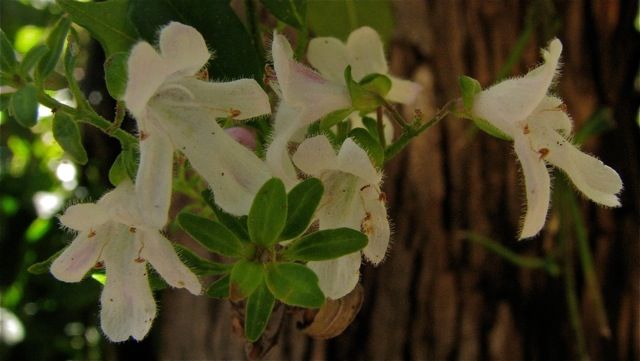Last month Geoff Carr, a botanical consultant, led a wonderful workshop at Angair.
He emphasised the uniqueness of our area, saying that: ‘the flora of Anglesea is of international significance …Anglesea is the interface between East and West Victoria’, and identified four new species growing in our area. One of these is the prostrate Rough Crane’s-bill Geranium sp. 4. which he found growing at Allen Noble Sanctuary. This has small, paired flowers like Variable Crane’s-bill Geranium sp 2, but they are pinker than the other two local geranium species and have long points on the sepals. The most distinctive feature is the rough, hairy stems. I found it interesting to run my fingers up the stems (as the hairs face downward), and have chosen it as my last sensory plant for the year.

Rough Crane’s-bill
Geoff also pointed out Tall Spike Sedge Eleocharis sphacelata , the biggest sedge growing at Allen Noble. He showed us the flower-head which looks like a pointed extension of the stem, and has an unusual lizard-like texture. There are many of these sedges growing next to the boardwalk, near enough to examine closely. I found it quite fascinating using the magnifier to view those in full flower, as the creamy, curling stamens and stigma stand right out from the flower-heads.

Tall Spike Sedge
Many people confuse our geraniums and pelargoniums, and as both are flowering it is good time to identify them. Our most common pelargonium species, Austral Stork’s bill P. australe, is much more robust than the geraniums and grows higher into a low bush. The leaves are also much larger and only slightly lobed, and the pink and white flowers grow in colourful clusters.

Austral Stork’s bill
Look out for an even more colourful plant which has been quite stunning this year, Common Everlasting Chrysocephalum apiculatum. The upright clusters of small, bright-yellow papery daisies are a real contrast to the soft grey-green leaves.

Common Everlasting
I have been challenged this last month in identifying a number of prostrate plants with small white flowers. Matted Pratia Lobelia pedunculata is a matlike plant which grows in moist areas with tiny, five-starred flowers, and small oval, toothed leaves.

Matted Pratia
Common Woodruff Asperula conferta has linear pointed leaves growing in whorls or rings. The tiny flowers have four petals, which tend to curl downwards, and grow in small clusters.

Common Woodruff
I was pleased to find examples of our two Starworts which grow in tangled masses and have very similar and delightful starry flowers on single stems. Their leaves are the distinguishing feature, as Prickly Starwort Stellaria pungens has narrow prickly leaves, and Forest Starwort Stellaria flaccida has oval, toothed leaves.

Prickly Starwort

Forest Starwort
Enough of the prostrate plants… you may be relieved to know that there are several large plants, also with white flowers, which don’t require getting down on hands and knees in order to have a close look! There are a range of daisy-bushes, Olearias with similar looking flowers, but of varying heights up to 7 metres. We even have our own ‘seasonal’ tree in the form of the Victorian Christmas Bush Prostanthera lasianthos var. lasianthsos.

Victorian Christmas Bush
Be sure to take your Flowers of Anglesea and Aireys Inlet on your summer walks to help you identify some of these often confusing plants.
Ellinor Campbell